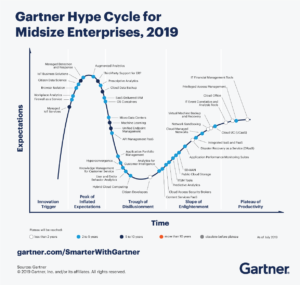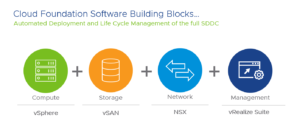Redefining Hyper-Converged Infrastructure
Date:10-10-2019



By Charles Chow, Specialist Solutions Engineering Manager, VMware Southeast Asia Korea
Hyper-converged infrastructure (HCI) first came to market about a decade ago, positioned as enterprise storage that is largely defined by software. The common usecase for HCI in the early days were largely VDI workloads where end-users often required a highly performant storage for a fraction of the cost. HCI with its server economics checked all boxes, hence overtime its capabilities and benefits found its way into other workloads in the enterprise.
HCI has come a long way since then and is fast becoming mainstream. The diagram below shows the hype-cycle of “hyperconvergence” at the tail end of the “disillusionment cycle”. Enterprises understand clearly the can do’s of HCI today and many weaker offerings in the market have been weeded out.

So, what’s next?
HCI solutions today are also evolving beyond storage. For VMware at least, HCI is defined as compute, network, storage and management all in a single unified stack. This is in line with what end-users want as they transition into the hybrid cloud model (which incidentally is also on the hype-cycle but further along).
End-users today want infrastructure to be invisible. Have you wondered about how “invisible” your datacentre is today? Can you deploy a switch, router, storage, or VM now if you needed it?
The ability to provision on demand is a capability that public cloud providers like AWS & Azure have perfected overtime, and the secret sauce is the abstraction of functionalities in software, running on commodity x86 servers. Compute, network or storage is a click away and the hardware building block is to add servers. Not to mention that all components are managed seamlessly and integrated natively.
Start small, finish big
This capability is no longer limited to big boys or public clouds like AWS/Azure.
VMware Cloud Foundation (VCF) is our offering that allows end-users to attain public cloud like capabilities on-premise. VCF is easily deployed as a 100-server cluster as you would in a 4-server cluster environment. The smallest of enterprise can reap the benefits today. The one-click upgrade or life cycle management is the cornerstone of full stack offerings like VCF, where we take care of software interoperability, VM failovers and hardware compatibilities in a single software package. No more fussing around time consuming and tedious prep work leaving you more time to manage applications. Here is a demo.

The VCF stack also comes ready with VMware’s Hybrid Cloud Extension (HCX) solution for customers looking for future expansions into the public cloud. HCX simplifies workload migration from on-premise to the cloud, cloud to edge and edge back on-premise. Such application mobility and agility are available here and now (not some roadmap)! Here is a demo of HCX.
Are you redefining your datacentre today?

























